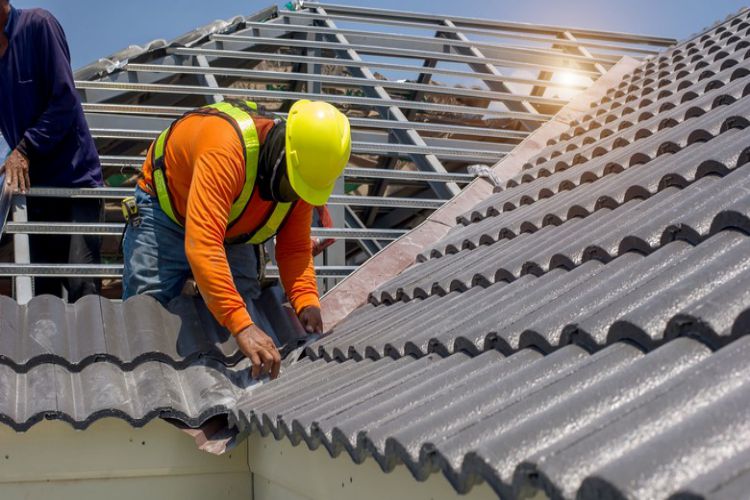Replacing your roof can feel like one of the biggest home improvement expenses you’ll ever face. Between materials, labor, and cleanup, costs can quickly climb into the thousands. But here’s the truth most homeowners overlook: you don’t have to pay premium prices to get a durable, high-quality roof. With the right approach, a little planning, and informed decisions, you can significantly reduce your expenses—without cutting corners on craftsmanship or longevity.
Below, we’ll walk through practical ways to save money on your next roof replacement while ensuring your investment stands strong for decades.
Plan Ahead and Avoid Emergency Replacements
Many homeowners only think about replacing their roof after a major leak or storm damage. Unfortunately, waiting until the last minute often means paying more. Roofing contractors are busier during emergency seasons, and you may have fewer options when it comes to materials and scheduling.
Planning ahead is one of the easiest ways to cut costs. Start by inspecting your roof at least twice a year—ideally in the spring and fall. Look for missing shingles, curling edges, or signs of water infiltration in the attic. When you catch small issues early, you can plan a replacement on your terms, not under pressure.
This foresight allows you to collect quotes, compare options, and even schedule the work during a contractor’s slower months—when discounts and promotions are more common.
Compare Multiple Quotes—But Look Beyond the Price Tag
It might sound obvious, but getting multiple quotes is the foundation of smart roofing savings. Prices can vary widely between contractors, even within the same area. However, focusing solely on the lowest bid can backfire if it means inferior materials or rushed workmanship.
When evaluating estimates, pay attention to details such as:
- The type and brand of roofing materials
- Labor warranties
- Cleanup and disposal fees
- Timeline and scope of work
Ask each contractor to break down their costs. Some might include hidden fees or exclude essentials like underlayment or flashing replacement. A transparent, itemized estimate gives you the power to negotiate intelligently.
Hire a Local Expert for Cost-Efficient, Reliable Work
Hiring a local contractor is one of the smartest ways to balance affordability and quality. Local roofers are more familiar with your area’s building codes, climate conditions, and material availability. They can recommend cost-effective solutions that work specifically for your region’s weather challenges.
For instance, homeowners searching for a cheap residential roofing contractor in West Palm Beach, FL should look for professionals with a proven track record in coastal environments. Local expertise ensures that your roof can withstand humidity, salt exposure, and storm season—all while avoiding unnecessary costs tied to out-of-area contractors.
Local companies also tend to have established relationships with nearby suppliers, which can translate into faster turnaround times and lower material costs.
Choose Materials Wisely—Balance Cost and Longevity
Roofing materials have the greatest impact on overall cost, but also on durability. Asphalt shingles remain the most popular and budget-friendly option, with a lifespan of about 20 to 30 years. However, there are premium asphalt options that mimic the look of slate or wood without the high price tag.
Metal roofing, while more expensive upfront, can last 40 to 70 years and may save you money in the long term due to its low maintenance and energy efficiency. Clay and slate tiles offer unmatched beauty but are typically the priciest options, both in materials and installation.
If you’re on a budget, ask your contractor about architectural shingles—they strike a balance between price, performance, and appearance. Some brands also offer extended warranties that can add long-term value to your investment.
Consider Roofing Overlays—When It’s Appropriate
If your existing roof structure is in good condition, you might be able to install new shingles over the old ones. This method, known as a roof overlay or re-roofing, can save thousands on tear-off and disposal costs.
However, overlays aren’t always recommended. Adding new shingles increases the roof’s weight and can shorten the lifespan of the new layer. It’s best suited for asphalt shingle roofs that have only one existing layer and no significant damage underneath.
Have a trusted roofer inspect your home to see if this option is viable. If the underlying structure is solid, an overlay can be a cost-efficient way to refresh your roof’s look and protection.
Time Your Replacement Strategically
Roofing is a seasonal business, and timing can influence pricing. Peak roofing season typically falls in late spring through early fall, when demand—and costs—are highest.
Scheduling your project in late winter or early spring, when contractors are less busy, can result in better rates and more personalized service. Many roofing companies offer off-season discounts to keep their crews busy.
Additionally, ordering materials in advance can help you avoid price spikes caused by supply chain issues or seasonal shortages.
Reuse and Recycle Where Possible
If your roof’s flashing, gutters, or vents are still in good shape, ask if they can be reused. Reusing certain components can shave off hundreds from your total bill.
You can also inquire about recycling old shingles. Some contractors participate in recycling programs that repurpose asphalt shingles into pavement materials. Not only does this save on disposal fees, but it also reduces environmental waste—a win-win for both your wallet and the planet.
Don’t Skimp on Underlayment and Ventilation
It’s tempting to focus only on shingles when trying to save, but the layers beneath are just as critical. Underlayment and ventilation systems protect your home from moisture buildup and heat damage. Skipping or downgrading these components might save you a few hundred dollars upfront but could lead to mold, leaks, or premature roof failure down the road.
Investing in proper underlayment and attic ventilation ensures that your new roof lasts its full lifespan—and helps your HVAC system work more efficiently, lowering your energy bills over time.
Take Advantage of Warranties and Rebates
Before signing a contract, ask about manufacturer warranties and potential rebates. Many roofing brands offer extended warranties when certified installers handle the job. While these warranties might slightly increase your initial cost, they provide long-term protection and peace of mind.
You may also qualify for energy efficiency incentives if you choose reflective or ENERGY STAR-rated roofing materials. These roofs reduce heat absorption, keeping your home cooler in the summer and trimming your energy bills. Check with your local utility company for available programs or rebates.
Perform Regular Maintenance After Installation
The easiest way to protect your investment—and avoid premature replacement—is through consistent maintenance. Clean gutters regularly, remove debris after storms, and trim overhanging branches that can damage shingles.
Schedule professional roof inspections every one to two years. A small repair now can prevent a much larger, costlier issue later. Remember, even the best-installed roof won’t last if it’s neglected. Maintenance is where long-term savings truly compound.
Negotiate, But Know Where to Draw the Line
Most contractors are open to negotiation, especially if you’re flexible with timing or payment. Ask about price-matching policies or financing options. However, avoid pressuring roofers into cutting essential steps or using substandard materials.
Instead, focus negotiations on aspects like material choices, scheduling flexibility, or bundled services such as gutter installation or attic insulation. A fair conversation can often lead to mutual savings without compromising quality.
Conclusion: Smart Choices Lead to Lasting Savings
Saving money on a roof replacement doesn’t mean settling for less. It’s about making informed, deliberate choices—from planning ahead and comparing quotes to timing your project strategically and hiring the right professionals.
By focusing on quality materials, expert installation, and proper maintenance, you’ll extend your roof’s lifespan and protect your home’s value—without draining your savings.
A well-planned roof replacement isn’t just a cost; it’s an investment. And with the right approach, it’s one you can make wisely and affordably.

